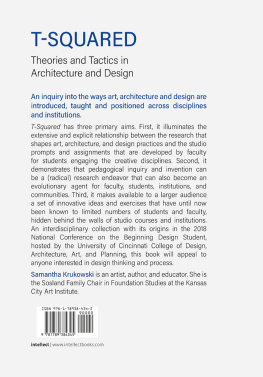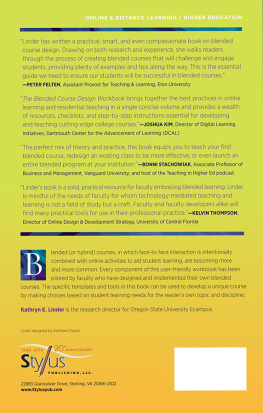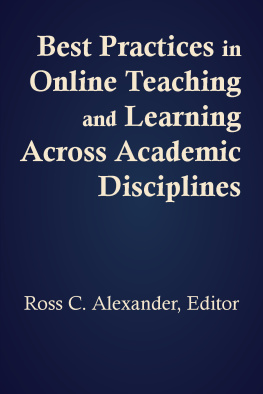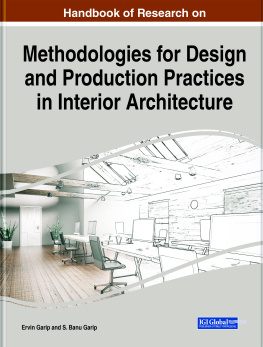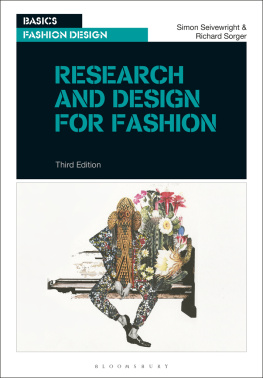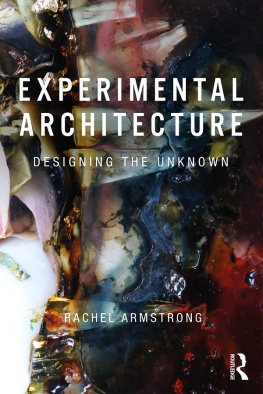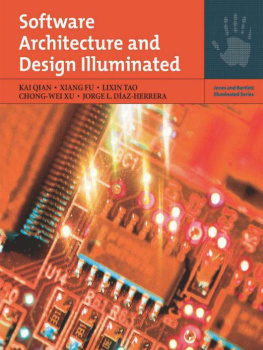Contents

T-Squared
T-Squared
Theories and Tactics in Architecture and Design
EDITED BY
Samantha Krukowski

First published in the UK in 2022 by Intellect, The Mill, Parnall Road, Fishponds, Bristol, BS16 3JG, UK
First published in the USA in 2022 by Intellect, The University of Chicago Press, 1427 E. 60th Street, Chicago, IL 60637, USA
Copyright 2022 Intellect Ltd
All rights reserved. No part of this publication may be reproduced, stored in a retrieval system, or transmitted, in any form or by any means, electronic, mechanical, photocopying, recording, or otherwise, without written permission.
A catalogue record for this book is available from the British Library.
Copy editor: MPS Limited
Cover designer: Aleksandra Szumlas
Production manager: Laura Christopher
Typesetter: MPS Limited
Print ISBN 978-1-78938-433-8
ePDF ISBN 978-1-78938-434-5
ePUB ISBN 978-1-78938-435-2
To find out about all our publications, please visit our website. There you can subscribe to our e-newsletter, browse or download our current catalogue and buy any titles that are in print.
www.intellectbooks.com
This is a peer-reviewed publication.
For my mother and maternal grandmother Marilyn Krukowski (ne Denmark) and Julia Fox (ne Yablanowitz) Strong women, survivors And, for all of the dogs and horses Rasa, Corvus, Vesper, Sren, Sonja, Oddball, Gryphon, Oscar, Quantico, Alibi Guides in other languages
Figures
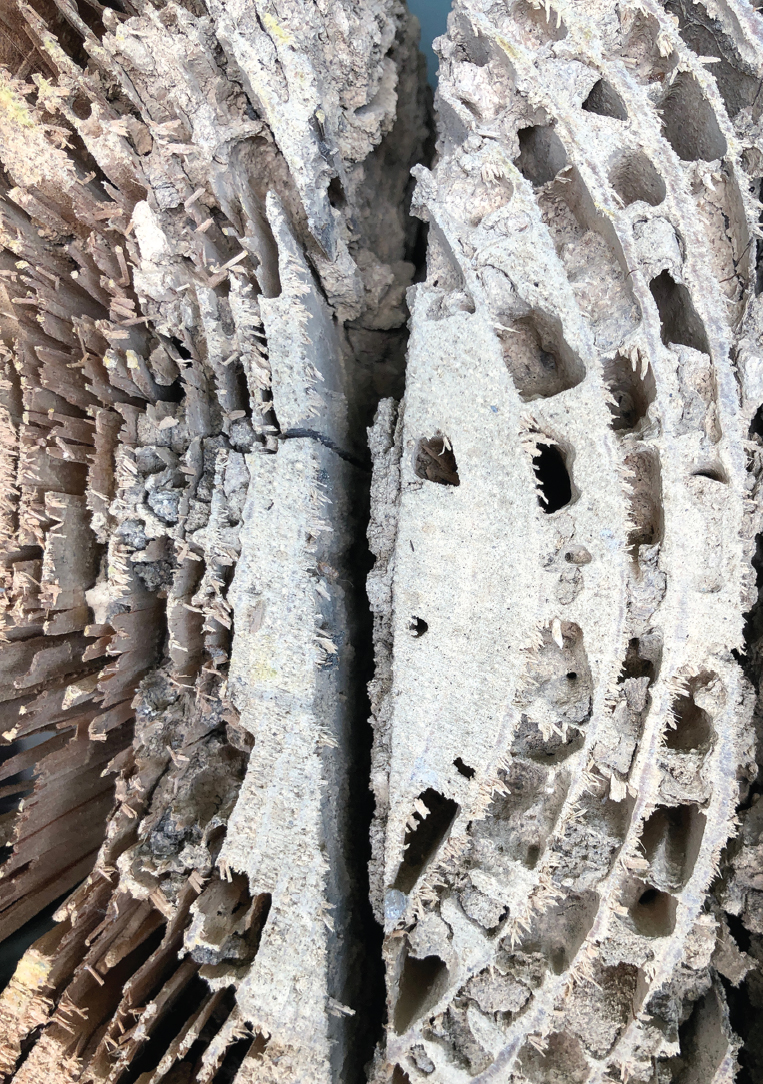
FIGURE 0.1 (pagae xiv): Structure by Termites. The Original Main Beam (Since Replaced) from Ella Jean, a Cincinnati Renovation Project Undertaken by the Editor and Her Partner. Photo by Samantha Krukowski.
Acknowledgments
There are a lot of people to thank.
First, I would like to acknowledge the eighteen authors whose ideas and methods populate and structure the pages that follow. There would be no book without them. After reading and re-reading their chapters, I am confident they will inspire many generations beyond those they have already touched through their contributions here.
There is a host of people with whom I worked on the National Conference on the Beginning Design Student (NCBDS) 2018 who helped start, albeit unknowingly, this ball rolling: Robert Probst, Kate Bonansinga, Jenny Ustick, Melanie Swickthank you for working with me to make that conference a success and for the support you consistently extended. The conference participants in 2018, and in years past, all also had something to do with the germination of this volume, as did the conference founders and annual organizers (Jim Sullivan, especially).
I also appreciate the confidence in me and in this project that Intellect Books has shown since I proposed itin particular through James Campbell, Helen Gannon, Laura Christopher and Tim Mitchell. Thank you for believing in this book and doing the heavy lifting to get it out into the world.
Since landing in Kansas City, I have started to find a new and inspiring community, and the one at the Kansas City Art Institute has been nothing but welcoming. Special thanks to Tony Jones, Bambi Burgard and the faculty for inviting me to join KCAI, and for honoring me with the title and accompanying resources of The Sosland Family Chair of Foundation Studies. The endowment for this chair faculty position, created by the Sosland Foundation, helped underwrite the production of this volume.
There are many teachers and colleagues who have inspired me through the years, some of whom have held me up in challenging times. Thank you to all of them, especially Richard Shiff, Michael Benedikt, Larry Speck, Linda Montano, Dan Naegele, Deborah Hauptmann, Ingrid Lilligren, Patricia Kucker, Stephen Meyer, Zeke Leonard, and Cameron Kitchin. For a few years now Buck Brannaman has been an important teachermany of the things he has taught me have helped me finish this project (meet it where it is, fix it up so they can find it). It is in part due to Buck that I am on a learning path that is proving one of the most challenging ever (I think my next book may be titled Art and the Horse). Thank you also to the many astoundingly talented students Ive had in studio, seminar, and lecture courses since I started teaching on-the-track in 2001. They have all been my teachers, too. And, thank you to Christopher Haas, a true original, born craftsman, and good friend who has joined me on some pretty wild adventures.
Last, but always beginningly, thank you to my daughter, Zoshe is a loyal, empathetic, up-for-anything, bright, talented, funny, and beautiful human, who also strangely enjoys making and bringing me my morning coffee. We have had, and will have yet, many adventures. Here is to our next Thailand or France or Montana or Newfoundlandso glad you are always open to the next Mama idea.
PART 1
STARTING UP
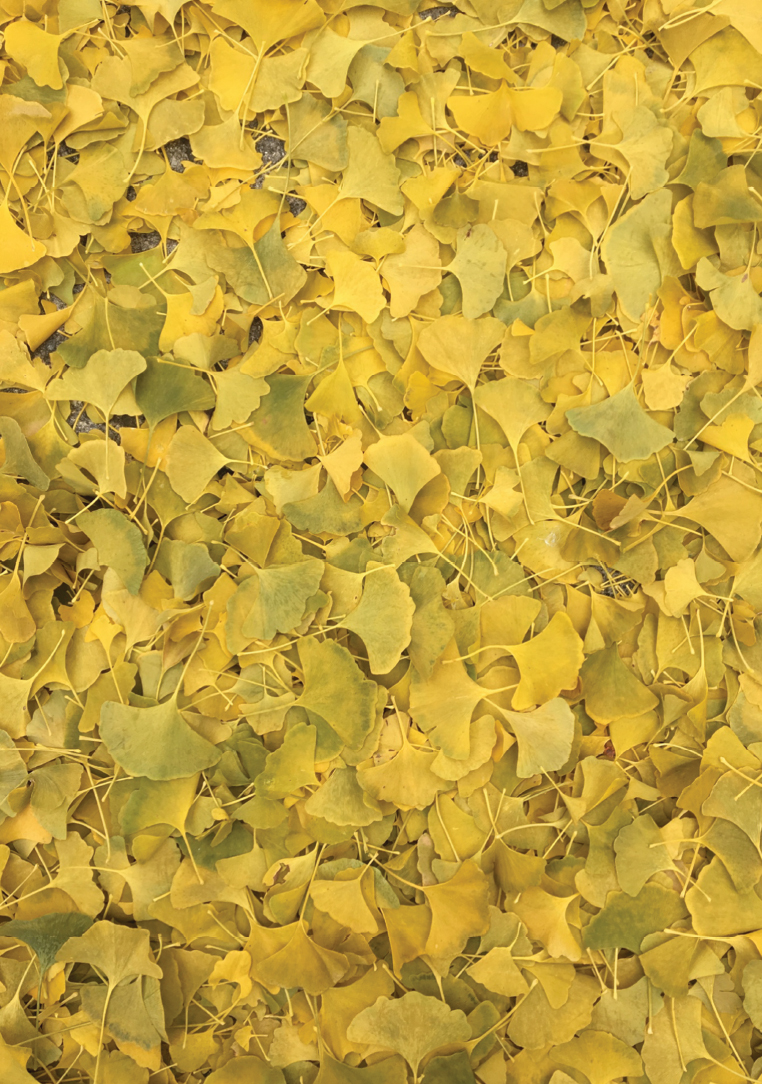
FIGURE 1.1 (page 2): Gingko Leaves, Fall, Kansas City. Photo by Samantha Krukowski.
1
Front Porch (coffee)
Samantha Krukowski
Sitting on rocking chairs, drinking coffee.
It has been four years since I first thought of putting this book together. In those four years, I have changed institutional affiliations, moved to the middle of the United States, and a global pandemic has shifted behaviors, activities, and productions of all kinds. While these life realities have slowed down the production of this volume, they have interestingly increased its relevance. The structure, location, content, meaning, and value of higher education were already actively being debated before COVID appeared. The pandemic then intensified the amount of focus and energy directed at these issues, especially for creative disciplines that are traditionally studio-based. The authors whose writing is represented here, who wrote the bulk of their chapters before COVID arrived, were all already engaging ideas and actionsas teachers, thinkers, and practitionersthat stretched our understandings of how, where, what, and why we learn. I identified their work for inclusion precisely because of how nimble, curious, irreverent, unexpected, enterprising, and purposeful it is, and because their efforts as teachers reflect these qualities. If COVID has shown us anything, it is that the ability to be all of these things supports creative responses to societal and political change and that robust creative efforts are essential to designing human survival in dangerous and unpredictable times.
The idea for this book originated in 2018 when I was organizing the National Conference on the Beginning Design Student (NCBDS 34) for the College of Design, Architecture, Art, and Planning at the University of Cincinnati. Late one winter evening, on the third floor of an old Victorian house, I stood in front of a scarred oak table on top of which I had separated and grouped all of the submitted conference papers. I was working to discern topic themes and curate the papers into sessions, and there was so much richness of content that I had to make it physicalI found a way in by printing all the papers and manually moving them from one place to another until some kind of logic appeared. Eventually, after a lot of shuffling and rewritten sticky notes, over one hundred and fifty papers generated about thirty categories which, when taken together, defined a landscape of ideas that was inspiring faculty who teach students in their first years of architecture, design, and art education.

